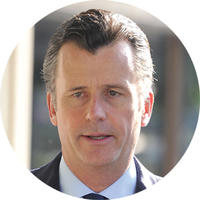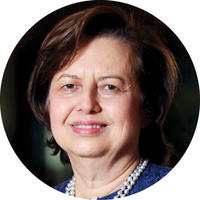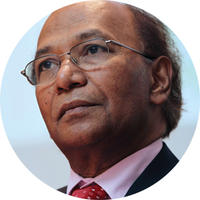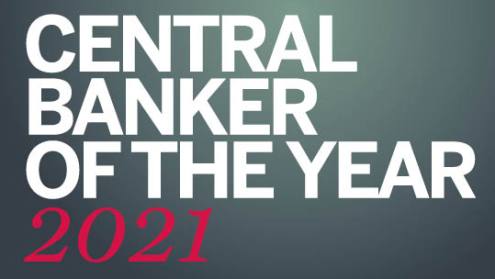Central Banker of the Year, Europe
Philipp Hildebrand, Swiss National Bank
In October 2010, while the Basel Committee discussed 7% common equity and 10.5% total capital adequacy requirements and bankers fretted about the need for a global level playing field, the Swiss authorities decided to go it alone. A 10% common equity and 19% total capital adequacy target for the country’s two international banking giants, Credit Suisse and UBS, quickly became popularised as the ‘Swiss finish’.
There were some complaints about possible harm to their international competitiveness. But with the largest two banks holding assets equivalent to more than eight times Swiss gross domestic product before the crisis, such warnings were given short shrift by Philipp Hildebrand, chairman of the Swiss National Bank (SNB).
“It was clear from the beginning that whatever standard would emerge internationally would be the minimum standard, something which is often overlooked. Given the history of our financial centre, the role of wealth management as the traditional core of its business model, and the structure of the largest banks’ balance sheets, we were deeply convinced that beyond a difficult transition period, being decisive on capital would become a competitive advantage,” says Mr Hildebrand.
That prognosis is proving correct, as funding markets turn increasingly hostile towards banks perceived as undercapitalised. In recent months, Switzerland has started to look more like a leader than a loner, with the UK’s Independent Commission on Banking and the European Banking Authority now also advocating capital adequacy ratios above those proposed in Basel III.
Bank regulation was not the only unprecedented challenge facing Switzerland in 2011, as investor flight away from the euro area prompted unmanageably large inflows to the Swiss franc. By August 2011, the SNB calculated that the country’s real effective exchange rate was 40% over its long-term average since 1990, and Mr Hildebrand feared deflation and lasting structural damage to an economy where every second franc is earned abroad.
The SNB acted very forcefully in September, announcing a cap on the exchange rate at SFr1.20 per E1, with a pledge to intervene on an unlimited scale to enforce this cap. The overwhelming nature of the response was sufficient to convince the market that the SNB meant business, reducing the need for physical exchange rate intervention. The Swiss franc has declined from close to parity in August to about SFr1.24 per E1 at the time of going to press.
“In an environment where the overvaluation reached such extreme levels by any definition, we needed to be determined, clear and leave no doubt as to our commitment to fulfil our legal mandate. The policy step seems to enjoy credibility in the market place, which has manifested itself in market developments since September,” says Mr Hildebrand.
Central Banker of the Year, Asia-Pacific
Zeti Akhtar Aziz, Bank Negara Malaysia
Zeti Akhtar Aziz’s reputation as a highly competent central bank governor with a steady hand in monetary policy and supervising the banking sector stretches back a number of years. The reforms that she has overseen in the past 11 years have paid off this year as Bank Negara Malaysia, which like many other central banks had a challenging year.
In such a difficult environment, where so many commentators have their own opinion of what the central bank should be doing, Ms Zeti explains that clarity in communicating the central bank’s strategic focus is key. “It is very important not to be distracted on what we want to achieve,” she says.
Just as important, notes Ms Zeti, is having the powers to achieve this. As well as implementing legislation that gives the central bank more tools and instruments to manage market conditions, Ms Zeti has also focused on the central bank’s capabilities in terms of its resources and people. She says that Bank Negara Malaysia has now gone through its third organisational transformation since she has been governor. “We want to have that organisational capability so that we are able to stand our ground and to know that we are standing on solid ground,” she says.
That solid ground has been important in the past year, when the Malaysian central bank was focused on achieving price stability in the face of high commodity prices, slow growth in the US and crisis in Europe. In managing the balancing act of the risks of inflation with the risks to growth, Bank Negara Malaysia was able rein in inflation at 3.4% (as of the end of October 2011) and achieve growth in the region of 5%. “This is the pay-off of our efforts in the financial reforms over the past decade,” says Ms Zeti, who adds that the country learned many lessons during the Asian financial crisis of 1997-98.
She adds that lessons are still being learned from the current crisis in the eurozone, which has had an impact on Malaysia. “Despite the challenging environment, Malaysia’s financial system has continued to function with no interruption to intermediation… Of course we are affected [by events in the global economy] but we are now better able to absorb this instability,” says Ms Zeti.
In terms of its monetary policy, Ms Zeti points out that Bank Negara Malaysia is not an inflation-targeting bank. “This gives us great flexibility,” she says. Over the years since the financial crisis of 2008, Ms Zeti has been steady in her policy rate decisions. She was able to prove her critics wrong when she did not cut rates in the second half of 2008, and again in 2010 when she was one of the first to raise the policy rate.
Central Banker of the Year, Middle East
Riad Salameh, Banque du Liban
The confidence bestowed in Riad Salameh’s stewardship of the Lebanese banking sector was confirmed by his re-appointment to a fourth consecutive six-year term as governor of Banque du Liban in July 2011.
A stalwart of the country’s banking sector – he first entered Lebanese public service on August 1, 1993 – during Mr Salameh’s tenure, the country has faced myriad financial obstacles, but he has skilfully steered Lebanese banks along a path of steady growth.
This has continued up until the present day – with deposits growing at more than 7% and loans rising by 15% in the 10 months to the end of October 2011. During this time, foreign currency reserves reached an all-time high of $30bn. Indeed, in spite of domestic political paralysis in the first half of 2011 and the prevailing Arab Spring uprisings, Mr Salameh has maintained stability in the Lebanese banking sector.
Despite the presence of significant Syrian funds being held in Lebanese banks, the country has largely been immune to what is happening both in neighbouring Syria and across the world because of its prudent financial model of being highly liquid and well capitalised.
The Banque du Liban has also been doing more to encourage greater lending to the private sector. For the first time in Lebanon’s history, in May 2010 loans extended to the private sector overtook those to the public sector. Today, about $40bn of bank loans are allocated to the private sector, compared with $28bn to the public sector.
“We’ve created incentives that have contributed to lowering interest rates – both in the medium and long term, which has created a demand for loans for the housing market,” says Mr Salameh. “This has helped more than 100,000 Lebanese to become homeowners.” Mr Salameh has also enforced new laws that prohibit banks from making any investment in subprime real estate projects abroad.
Mr Salameh has also been widely credited with stabilising the Lebanese pound, which has resulted in a noticeable rise in deposits denominated in this currency. This has led to a 20% growth in credit in 2010 and a more than 15% increase in 2011. “We want to maintain a stable Lebanese pound as this is an anchor of confidence for both the banking sector and the broader economy,” he says.
Mr Salameh has also been effectively overseeing the financing of Lebanon’s public debt. At the end of July, just two weeks after being re-elected to his post, he oversaw the launch of a $1.2bn two-tranche Eurobond, proceeds of which are earmarked to refinance maturing debt. The bond was executed at levels that were a record low in terms of interest.
Looking forward, Mr Salameh intends to maintain his strictly conservative stance. On December 1, 2011, Banque du Liban issued a new regulation asking banks to increase their solvency ratio to 12% by 2015 – noticeably higher than the 7% stipulated by Basel III criteria. “We’re looking at having 10% in Tier 1 and 2% in Tier 2 so we are emphasising the cash portion in the bank’s capital.”
Central Banker of the Year, Africa
Rundheersing Bheenick, Bank of Mauritius
Mauritius is particularly vulnerable to the vagaries of external inflationary pressures, thanks to the openness of its economy and the fact that food and fuel – which mostly have to be imported – make up 40% of its consumer price index.
The past three years have hardly been easy for Rundheersing Bheenick, governor of the Bank of Mauritius. First, he had to deal with a sharp fall in inflation in 2009 as the island’s tourism industry and sugar and textile exports slowed, hurting the economy. Then, thanks to a quick recovery from late 2010, inflationary pressure increased again.
But the country has been fortunate to have him as its central banker during this volatile period. From the moment he
was appointed in February 2007, he has proved himself to be a reformer and far-sighted operator.
Within two months of starting the job, he created a monetary policy committee (MPC). Mr Bheenick cites interest rate decisions being made by consensus, rather than opaquely by the governor, as a big reason for Mauritius’s stable inflation since then.
The MPC moved quickly to deal with the forces buffeting Mauritius during its downturn, cutting its key repo rate sharply, which helped launch the country’s recovery.
In 2011, the Bank of Mauritius had to react carefully to the economy’s renewed buoyancy and ensure inflation did not rise too far. It succeeded, thanks largely to the MPC’s decision to put up the repo rate from 4.75% to 5.5% in the course of the first nine months.
Mr Bheenick says that November’s inflation rate of 6.6% – significantly below the levels of 9% to 10% witnessed between 2006 and 2008 – marks the peak of the cycle. He expects it to fall to between 5% and 5.5% by June, within what he calls the central bank’s “comfort zone” of 4% to 6%.
Mr Bheenick has helped Mauritius’s economy, expected to grow 4% in real terms in 2012, in other ways too. In April 2011, to boost credit growth, he capped banks’ holdings of Treasury bills – the rates of which he said had fallen to “unacceptably” low levels – to 20% of their liquid assets. “When the crisis hit, our bankers seemed to become a bit risk averse,” he says. “They preferred to sit on extra liquidity instead of lending it.” Credit growth rose to a healthy 12% by the end of 2011.
The central bank’s policies have also led to a stable Mauritian rupee, which, unlike most other African currencies, appreciated against the dollar last year. Mr Bheenick had faced plenty of pressure from the island’s exporters to weaken it, but he refused to budge, something he firmly believes is in Mauritius’s long-term interests. “We do not believe we can gain competitiveness by depreciating the currency,” he says. “That was the quick fix our exporters were always asking for. They had got used to it and were very surprised I didn’t want to deliver on it.”











